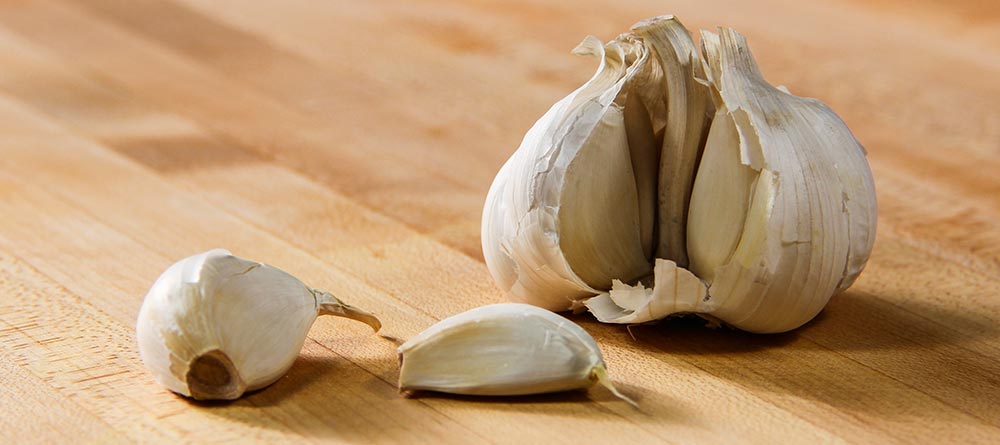
Years ago, Laura and I used to visit a restaurant that was located not too far away from our home towns in New York. The restaurant was Italian in nature and in just about every dish they served, they included cooked whole garlic cloves. I can remember the joy I felt as I bit through these cloves because there wasn’t an overwhelming “garlicky” taste – there was more of a mellow, smooth, wonderful – well, you get the idea. Especially if you’re a garlic lover (like I am).
I guess the primary garlic challenge the kitchen in this restaurant faced was the peeling of each clove. I’m sure they did their fair share of slicing, chopping and mincing as well, but due to the sheer volume of whole cloves, I’m saying the focus was on the big pieces.
Unfortunately, not everyone or every recipe calls for whole cooked cloves of garlic. Most of the time, we’ll need to not only peel, but mince the garlic as well. And that’s what I’m going to cover in this post. As usual, I’ll include photos of the entire process. I’ll also throw in some links to sites at the bottom that talk about alternative methods or methods that expand upon the ones I cover here.
My Garlic Cloves
I have a whole bunch of cloves, but I’m going to limit my use to only two for this post. I don’t really want to mince too many of these things because I’m not sure we’ve got a recipe ready to use them up. I’d rather not have them sitting in the refrigerator.
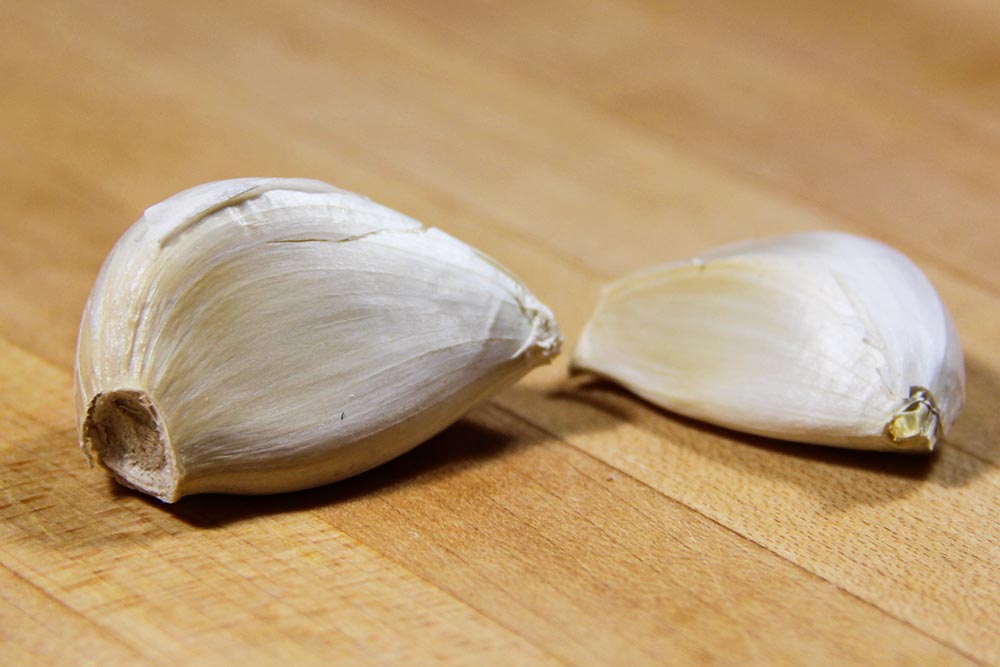
Trimming & Peeling
The very first task we need to take care of before we go ahead and begin mincing any garlic is to trim and peel each clove. Now, I’m sure we’ve all got horror stories about attempting to peel, but let me tell you, I’ve got a really nice tip for you. First though, let me give you a picture of my cloves after I trimmed the root end off each one.
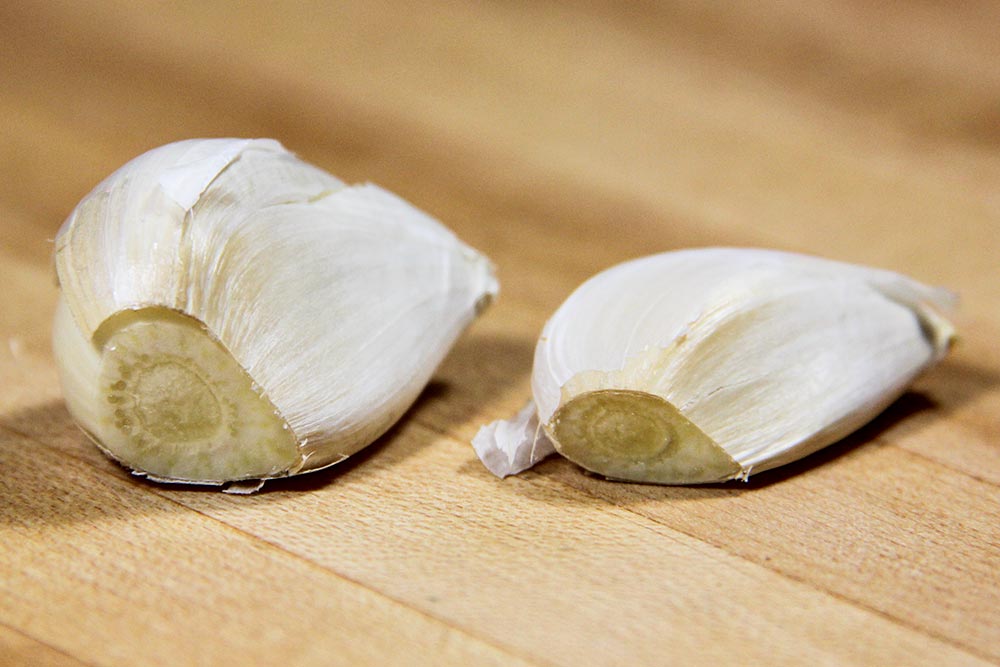
You can see the reason I went ahead and trimmed the butts off of these in the second picture in this post. Obviously, we don’t want to eat those tough root ends. Also, I’ll tell you, wow, what a strong smell these garlic give off once you begin working with them. Be careful with what you’re wearing when cutting into anything like this.
Here’s my fantastic tip for peeling garlic – once the ends are cut off, simply lay a nice, wide chef’s knife flat across each clove (just like in the photo below) with the blade facing away from you and give it a light punch with the pinky side of your fist. I’d say about three pounds of pressure. Be careful here because you don’t want to crush anything.
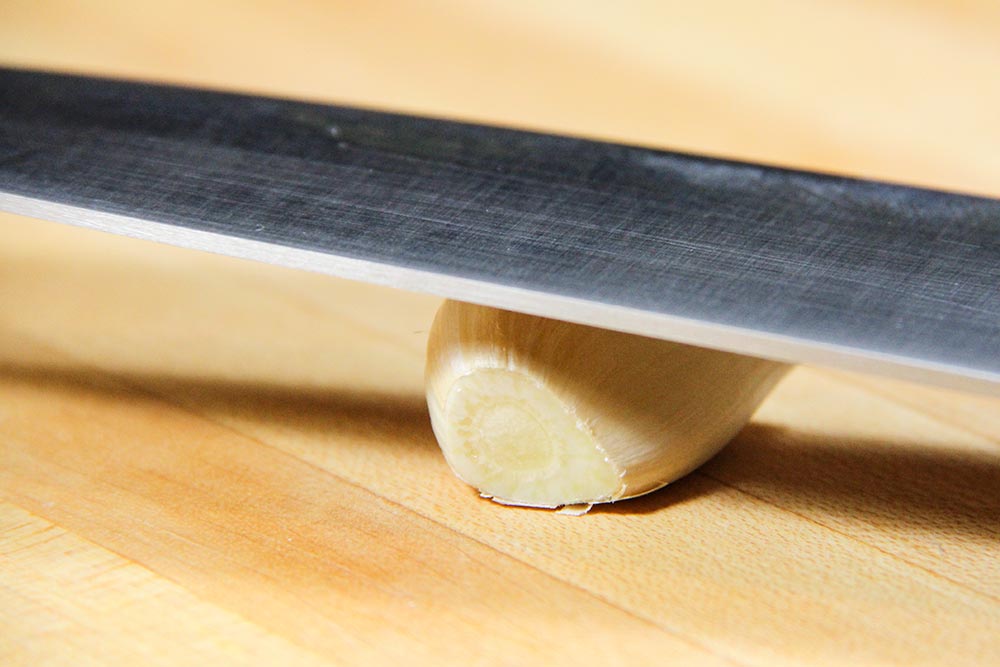
Once you give the flat side of the knife a quick punch or two, you should feel the garlic sort of move. That movement is the peel loosening from the actual clove. I believe the clove shrinks in some spots and expands in others causing the separation. If done properly, the peel comes right off.
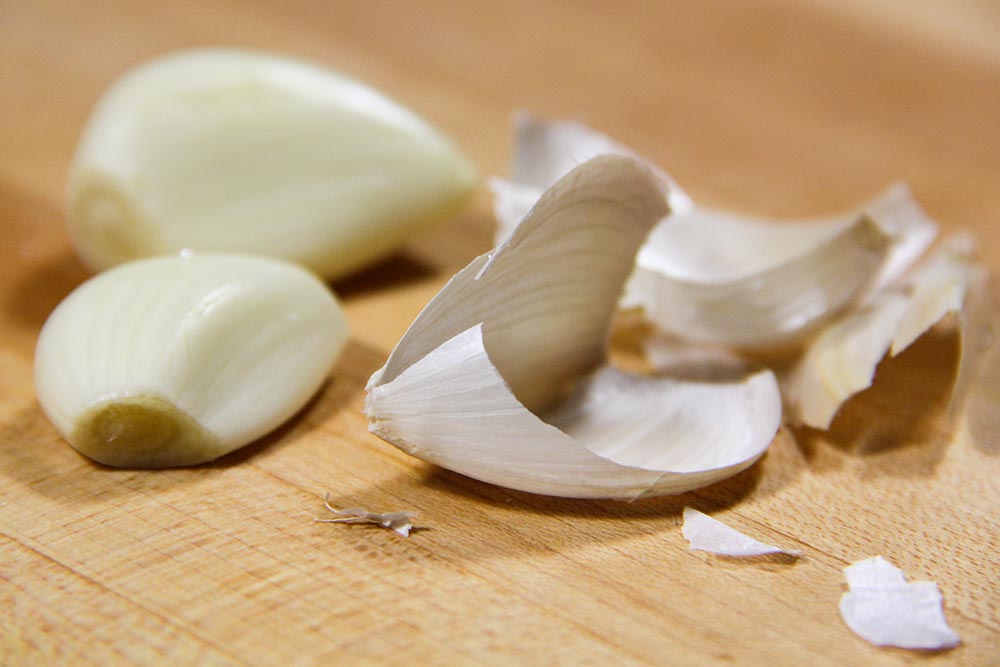
And here we are, left with two clean and peeled garlic cloves. I situated them with my paring knife as a lead-in to the next section. I really do love taking these types of photos, especially on our new cutting board.

Slicing & Mincing
I’m going to go ahead and offer two different methods for accomplishing the same task. The first method is to slice each clove into very thin pieces – I’d say about 1/16 of an inch thick (maybe an 1/8 inch). You can do this with either a chef’s knife or a paring knife. It’s up to you. When slicing for this post, I used the paring knife. In real life, I think I prefer to use the chef’s knife. the larger knife fits better in my hand and is easier to maneuver.
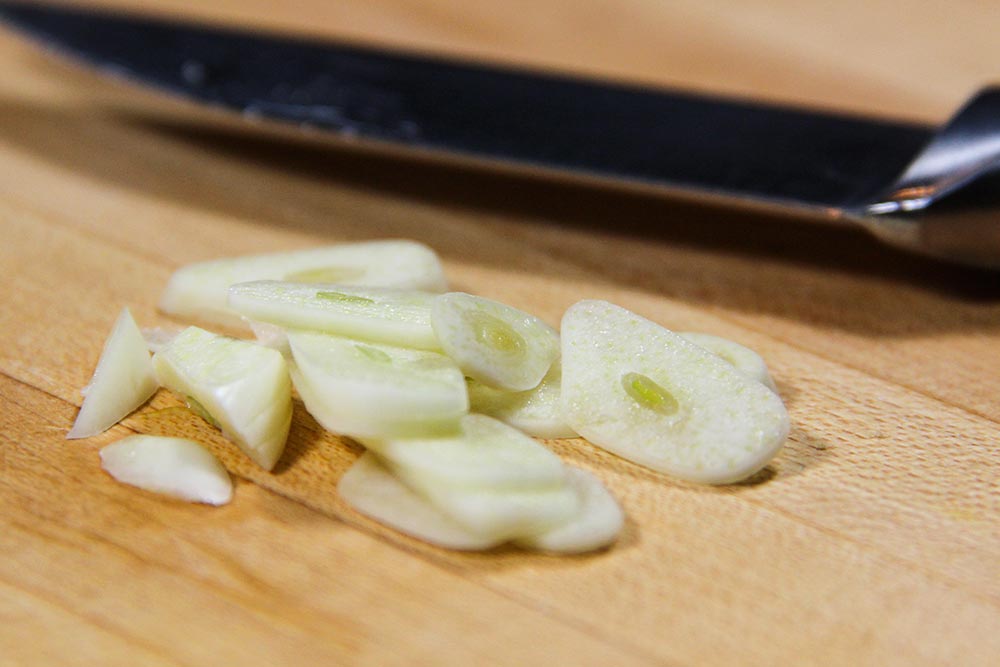
Once everything is sliced up nicely, including the end the clove is held by, we can go ahead and chop the clove into small pieces with the chef’s knife.
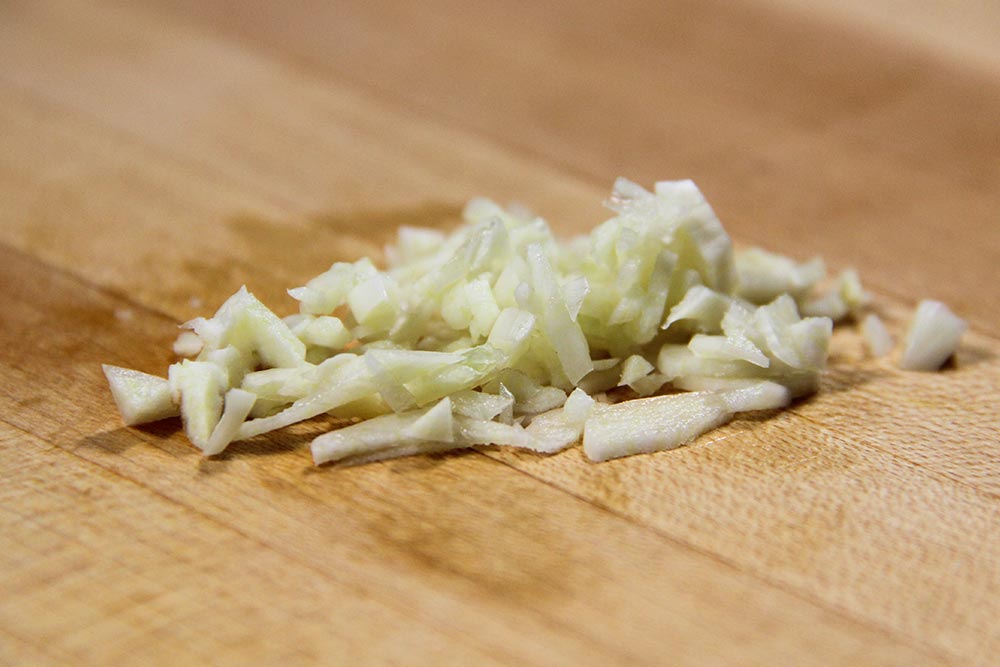
With this, we’ll have wonderfully minced garlic to use in any recipe we wish.
Cutting & Mincing
The next method is to cut into the clove lengthwise first, creating a sort of fanned out piece. Just be sure not to cut all the way through. You want to cut about 90% of the way into the clove. Check out the photo below to see what I’m referring to.
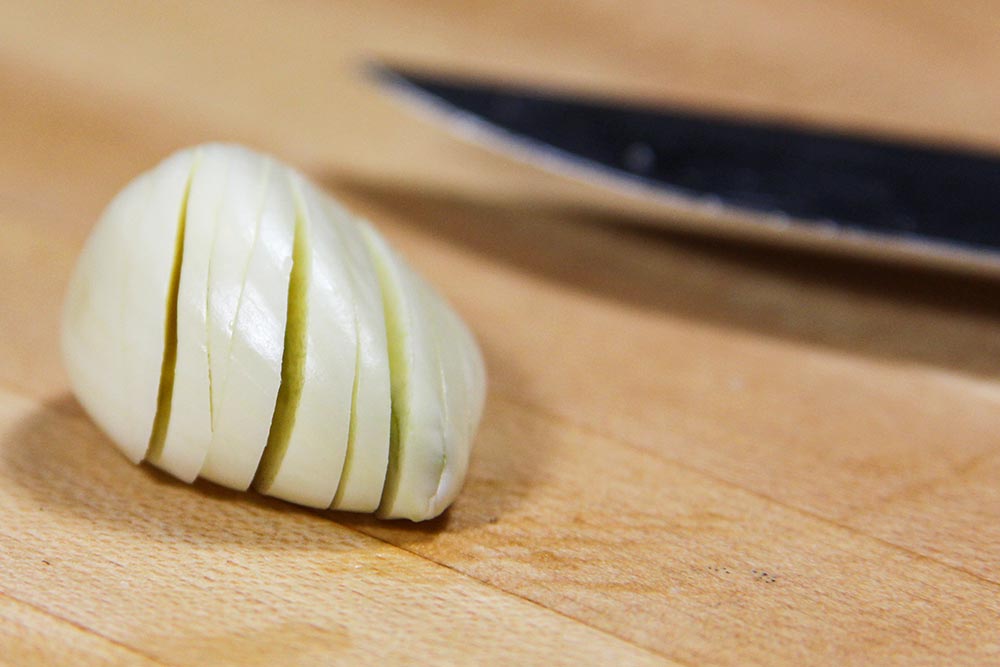
For this, you most definitely would want to use a paring knife. It’s an up-close and delicate operation. I’m not sure a chef’s knife would offer the control necessary.
After cutting into the clove, cut across all the pieces at once, like I did when I was chopping the onion in my last post. After this is complete, all that will be left is another pile of chopped garlic.
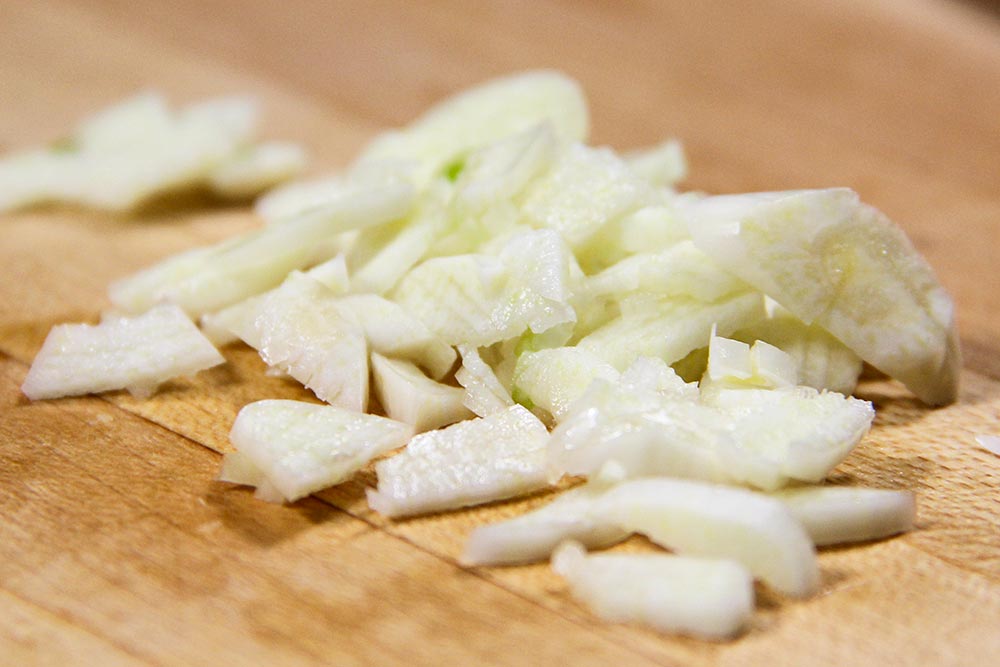
A bit of mincing with a chef’s knife again and we’ll be all set.
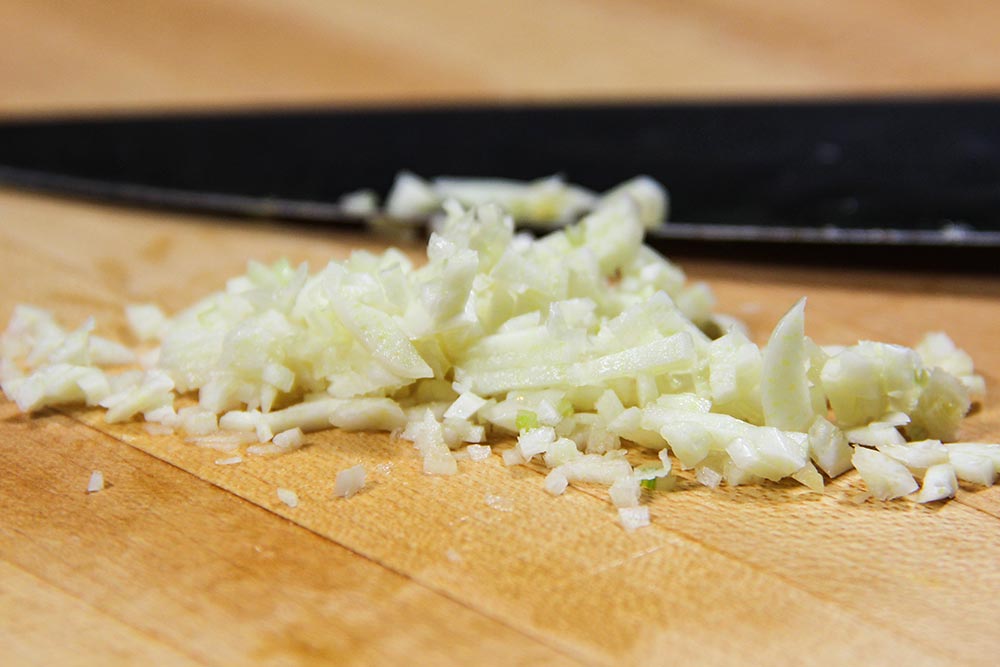
I bet you’re asking what the difference is between the two methods. Well, the first is accomplished with two types of cuts and the second is accomplished with three (resulting in smaller pieces). Chefs across the world claim that the more you cut, slice, dice and mince a clove of garlic, the more flavor you get. I tend to believe that because flavor coincides with surface area. If you can expose more surface area as you’re processing something like this, you’ll be rewarded with the appropriate flavor.
——
If you’ve enjoyed today’s post and found it helpful, please share it with a friend. Also, if you’d like to continue reading and would like my posts sent directly to your email inbox, simply sign up for my newsletter. I’ll send each and every post directly to you. Thanks!
Leave a Reply